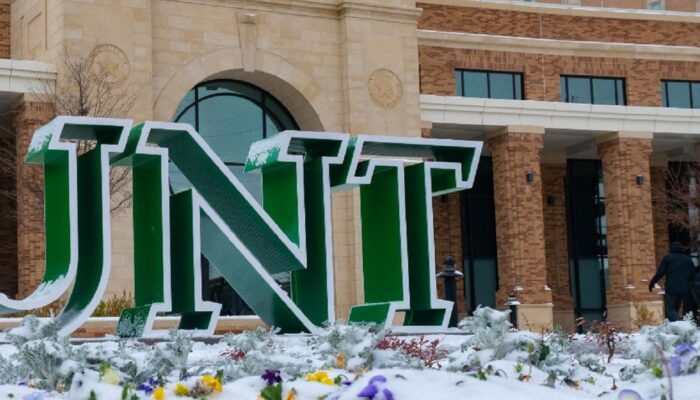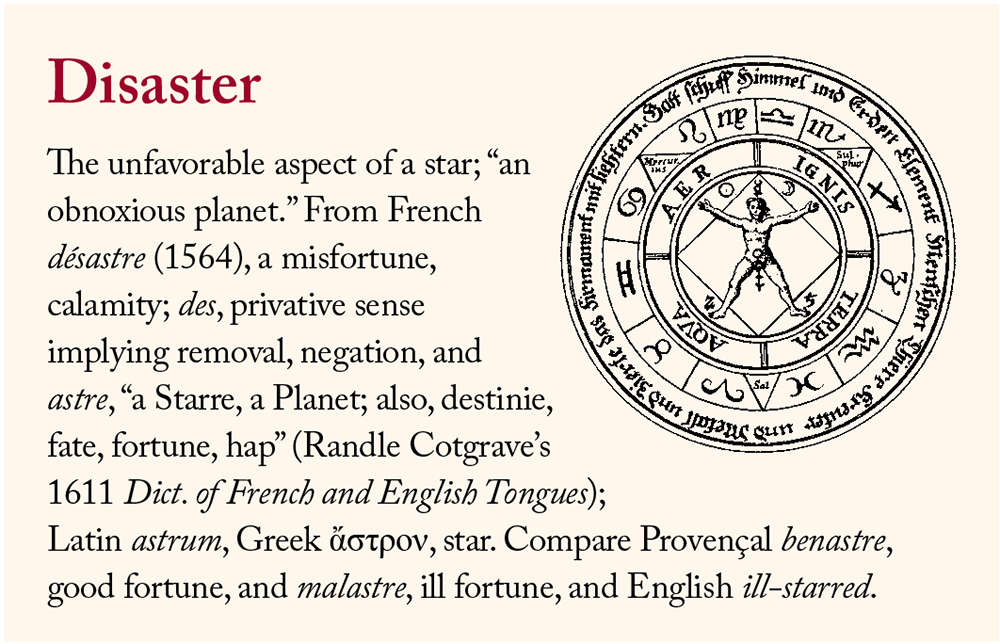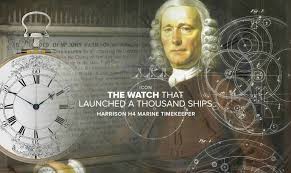CLICK COVER IMAGE
More:
Stanford University: Alcohol policies at American universities

The global standards for heat tracing systems are developed by IEC Technical Committee 27. The scope of work for this committee is reproduced below:
Standardization in the field of industrial equipment and installations intended for electroheating, electromagnetic processing of materials and electroheat based treatment technologies Note: The scope of interest covers industrial installations with the use of the following equipment: – equipment for direct and indirect resistance heating; – equipment for electric resistance trace heating; – equipment for induction heating; – equipment using the effect of EM forces on materials; – equipment for arc heating, including submerged arc heating; – equipment for electroslag remelting; – equipment for plasma heating; – equipment for microwave heating; – equipment for dielectric heating; – equipment for electron beam heating; – equipment for laser heating; – equipment for infrared radiation heating. The list presents typical examples of equipment and its applications and is not exhaustive.
CLICK HERE for the link to the TC 27 Strategic Business Plan
Titles in this committee’s bibliography appears to be stable. As with all IEC titles, they are relatively narrow in scope compared with the titles promulgated by most US standards developing organizations. Our interest lies primarily in the application of this technology within and around education community buildings.
While heat tracing generally goes un-noticed it is an essential part of cold weather safety. It is wise to keep pace with its evolution with innovation in materials and controls with the lead.
We maintain this committee’s work on the standing agenda of our seasonal Snow & Ice colloquia; along with US standards developed by UL, IEEE, NEMA, NFPA, ICC, ASHRAE and a few others. We also collaborate with the IEEE Education & Healthcare Facilities Committee on this topic. See our CALENDAR for the next online meeting; open to everyone.







Issue [18-332]
Category: Electrical
Colleagues: Mike Anthony, Lorne Clark, Jim Harvey
![]()
Today we break down the catalog for food safety in education communities; with primary attention to consultations from private standard developing organizations and federal agencies charged with food safety. We do so with sensitivity to animals and plants and sustainability of the global food supply chain. Many schools are the communal cafeterias for the communities that own and operate them and run at commercial scale.
We prepare responses to public consultations released by standards developing organizations which, in many cases, have significant conformance enterprises.
ANSI Standards Action | Current Weekly Edition
Note the call for public comment on proposed WTO Agriculture, Sanitary and Phytosanitary (SPS) measures (Page 48)
Core titles are published by the ANSI accredited organizations listed below:
The ASHRAE catalog is the most cross-cutting and fastest moving catalog in the land. If you claim ownership of the United States energy domain you pretty much capture everything related campus safety and sustainability. Best to deal with it on a day-by-day basis as we usually do according to daily topics shown on our CALENDAR.
Association for Packaging and Processing Technologies
American Society of Agricultural and Biological Engineers
Institute of Electrical and Electronic Engineers
National Electrical Safety Code (Our particular interest lies in the safety and reliability of off-campus agricultural and research facilities that receive power from regulated utilities)
Kitchen Safety and Security System for Children
TupperwareEarth: Bringing Intelligent User Assistance to the “Internet of Kitchen Things”
Designing an IoT based Kitchen Monitoring and Automation System for Gas and Fire Detection
Re-Inventing the Food Supply Chain with IoT: A Data-Driven Solution to Reduce Food Loss
International Code Council
International Building Code Assembly Group A-2
International Building Code Group U Section 312 Agricultural Buildings
International Building Code Moderate Hazard Factory Industrial Group F-1 (Food Processing)
National Fire Protection Association
National Electrical Code Article 210 (Branch Circuits)
National Electrical Code Article 547 (Agricultural Buildings)
Standard for the Installation of Air-Conditioning and Ventilating Systems
Public Input Report for the 2024 Revision
Standard for Ventilation Control and Fire Protection of Commercial Cooking Operations
Public Input Report for the 2024 Revision
Food Equipment
Commercial Warewashing Equipment
Commercial Refrigerators and Freezers
Commercial Cooking, Rethermalization and Powered Hot Food Holding and Transport Equipment
Commercial Powered Food Preparation Equipment
US Federal Government:
US Department of Agriculture
Food & Drug Administration (HACCP)
State Governments:
Lorem ipsum @StandardsState
Global:
International Organization for Standardization
International Electrotechnical Commission
Codex Alimentarius
Food safety and sustainability standards populate are of the largest domains we track so if we need a break0-out session, let’s do it. Use the login credentials at the upper right of our home page.
More
Standards supporting vertical farming
STANDARDS SUPPORT SOPHISTICATED FARMING METHODS THAT BRING PRODUCE TO YOUR TABLE
US Food & Drug Administration: Food Facility Registration Statistics (as of January 11, 2021)
National Grange of the Order of Patrons of Husbandry
The U.S. Land-Grant University System: An Overview
American Society of Agricultural and Biological Engineers Standards Development
The origin of the Land grant act of 1862
International Electrotechnical Commission: Keeping food safe from farm to plate
Council for the Advancement of Standards in Higher Education: Dining Services Programs
Science and Our Food Supply: A Teacher’s Guide for High School Classrooms
“Dwell on the beauty of life.
Watch the stars, and see yourself running with them.”
― Marcus Aurelius, Meditations
The consumer discretionary sector is among the largest economic sectors in every nation. Consumer Discretionary is the term given to goods and services that are considered non-essential by consumers, but desirable if their available income is sufficient to purchase them. Consumer discretionary goods include durable goods, apparel, entertainment and leisure, and automobiles. The International Organization for Standardization administers leading practice discovery and promulgation of the standards in a core component of durable goods industry — textiles – through its Technical Committee 38.
We find continued student interest in these technologies so attention to the elevated hazards in research, instructional and display spaces require attention. We recognize that not every student is interested in cleaning neural network data sets or learning Tensor Flow but wants to devote their energy to making the world a better place by making the world a more beautiful place.
From the ISO/TC 38 prospectus:
STRATEGIC BUSINESS PLAN ISO/TC 38 Textiles
“…Textiles are one of the most important and versatile commodities in the global economy. The textile industries involve provision of raw materials, preparation of fiber production, manufacture of yarns and fibres, manufacture of fabric formation, finishing processing including bleaching, dyeing, printing, coating, special chemical treatments, transformation of the fabric into clothing, upholstery, or industrial/technical textiles, and rope and netting formation. Therefore, the textile industry concerns a variety of entities such as suppliers of raw materials, processors, manufacturers, traders, distributors, retailers, associated industries such as the laundry industry, government and educational establishments as well as consumers….
…One new field of innovation in the textiles is emerging as the smart textiles which cover either smart textile materials or smart textile systems, including some of them combining technologies with electronic textiles and wearable devices. The uses expected of the smart textiles extend over medical device, general product safety, textile labelling, etc. Our technical committee liaises for cooperation with other technical fields and be responsible for standardization of the textile field of smart textiles….”
Japanese Industrial Standards Committee is the Global Secretariat. ASTM International is ANSI’s US Technical Advisory Group Administrator

Educators and students in the United States interested in participating in the development of this product should communicate directly with Jen Rodgers at ASTM International, Jen Rodgers (jrodgers@astm.org). We maintain all ISO consensus products on the standing agenda of our monthly International Standards teleconference; open to everyone. See our CALENDAR for the next online meeting.








During today’s session we approach disaster avoidance, management and recovery literature from a different point of view than our customary approach — i.e. what happens when, a) there is failure to conform to the standard, b) there is no applicable standard at all. This approach necessarily requires venturing into the regulatory and legal domains.

Thinking about how that groundhog lied to us 🤨🤨🤨 pic.twitter.com/ZQOzzteCzs
— Penny Kmitt (@pennylikeacoin) April 4, 2024
We will confine our approach to the following standards development regimes:
We may have time to review State of Emergency laws on the books of most government agencies; with special attention to power blackout disasters.
Use the login credentials at the upper right of our home page.
https://t.co/chd9RJVc7G
print(“Disaster”) pic.twitter.com/Lu6Dw3bARq— Standards Michigan (@StandardsMich) November 15, 2021
This content is accessible to paid subscribers. To view it please enter your password below or send mike@standardsmichigan.com a request for subscription details.
“The Fish Fry is the unofficial homecoming of Indiana agriculture,” said Danica Kirkpatrick, Executive Director of the Ag Alumni Association. “Not only do we have a fun, educational program, but our guests tell us each year how much they enjoy the networking and exhibit area. While you can’t help but notice the obvious Purdue Pride at the Fish Fry, you don’t have to be an alumnus to attend.”
Programming languages face several challenges when dealing with leap years, primarily because leap years don’t follow a simple pattern and can vary depending on the calendar system being used. Some of the challenges include:
Algorithm Complexity: Writing algorithms to accurately determine leap years can be complex due to the various rules governing leap years in different calendar systems. For instance, the Gregorian calendar, which is the most widely used calendar system, has different rules than other systems like the Julian calendar.
Handling Calendar Systems: Some programming languages have built-in libraries or functions to handle leap years, but they may not support all calendar systems. Developers need to ensure that the language’s built-in functions or libraries accurately handle leap years according to the desired calendar system.
Cross-Platform Consistency: Different platforms and programming languages may implement leap year calculations differently, leading to inconsistencies when working with date and time data across different systems.
Localization: Some calendar systems used in various regions have different rules for leap years. Programming languages may need to support localization to handle these differences accurately.
Performance: Implementing leap year calculations efficiently can be challenging, especially when dealing with large datasets or frequent date/time manipulations. Optimizing leap year calculations for performance without sacrificing accuracy is important in high-performance applications.
To address these challenges, programmers often rely on built-in date and time libraries provided by programming languages or use third-party libraries specifically designed to handle calendar-related calculations accurately and efficiently. Additionally, thorough testing and validation of date-related logic are essential to ensure correctness, especially in critical applications.
Here’s an example of how you can use the calendar module to check if a year is a leap year:
import calendar
year = 2024
if calendar.isleap(year):
print(f”{year} is a leap year.”)
else:
print(f”{year} is not a leap year.”)
Alternatively, you can write custom logic to determine if a year is a leap year. The logic for determining leap years is as follows:
Here’s an example of how you can implement this logic in Python without using the calendar module:
def is_leap_year(year):
if year % 4 == 0:
if year % 100 == 0:
if year % 400 == 0:
return True
else:
return False
else:
return True
else:
return False
Looking back at 2023 @mikefiedler discovered some impressive metrics that we want to share! @fastly #PyPI #pytho pic.twitter.com/EXfWwduWA9
— Python Package Index (@pypi) February 14, 2024
“Science advances one funeral at a time”
— Max Planck
 Career & Technical Education Month | #CTEMonth
Career & Technical Education Month | #CTEMonth
Philosophiæ Naturalis Principia Mathematica | 1686 Sir Issaac Newton
A Mathematical Theory of Communication | 1948 Claude E. Shannon (University of Michigan)
1955 Polio Vaccine: Jonas Salk (University of Michigan)
Alexander Fleming
Born on: August 6, 1881, in Scotland.
Died on: March 11, 1955.
The Scottish bacteriologist known for discovering penicillin, revolutionizing medicine. His work paved the way for antibiotics, saving countless lives and earning him the Nobel Prize in Medicine. pic.twitter.com/jNkmKKNaJm— THE BIOGRAPHER (@DA_BIOGRAPHER) February 16, 2024
1439 – Johannes Gutenberg invents the printing press.
Oliver Heaviside (1850–1925) was a self-taught English mathematician and physicist who reformulated James Clerk Maxwell’s original set of twenty equations into the four differential equations known today as Maxwell’s equations. pic.twitter.com/xYFJFa341G
— Physics In History (@PhysInHistory) February 18, 2024
Heraclitus | Logos
Jordan Peterson: “No One is Ready for What’s Coming”
History of Western Civilization Told Through the Acoustics of its Worship Spaces
“The Great Archimedes”
Baylor University Presshttps://t.co/jbaGIt5tqW@Baylor_Press@BaylorECS pic.twitter.com/4FbcZqLPrQ— Standards Michigan (@StandardsMich) August 4, 2020

The Future of Cosmology | Roger Penrose
A Structure for Deoxyribose Nucleic Acid | James Watson & Francis Crick
ON THIS DAY IN HISTORY 11 JANUARY 1922: First Use of Insulin in Treatment of Diabetes by Sir Frederick G. Banting at the University of Torontohttps://t.co/8emK7QL3rh@UofThttps://t.co/wFm1acWCHchttps://t.co/5n032GQOSp pic.twitter.com/qJWCMdXsa1
— Standards Michigan (@StandardsMich) January 11, 2021
Sir Isaac Newton’s Principia: Mathematical Principles of Natural Philosophy
Power system load flow analysis in an interconnected system focuses on various aspects of AC power parameters, such as voltages, voltage angles, real power and reactive power. #Newton-Raphson #Gauss-Siedel @IEEECampus https://t.co/xoyNZd36KS pic.twitter.com/1gfvcsrF3g
— Standards Michigan (@StandardsMich) October 5, 2021
Maxwell’s Equations and Electromagnetic Waveshttps://t.co/lsQtMoQ99v
@yaleseas pic.twitter.com/CJQV6SQK2k— Standards Michigan (@StandardsMich) September 17, 2020
In 1883 the Edison & Swan United Electric Light Company was established. Known commonly as “Ediswan” the company sold lamps made with a cellulose filament that Swan had invented in 1881. Variations of the cellulose filament became an industry standard, https://t.co/mmDHYKDTlq pic.twitter.com/t5fRFKCEyW
— Standards Michigan (@StandardsMich) August 11, 2020
We’re celebrating the International Day of Women and Girls in Science!
Let’s look back on the life of Marie Skłodowska Curie: a Nobel Prize laureate who dedicated her life to science and became one of the world’s greatest scientists.#WomenInScience #NobelPrize pic.twitter.com/urix0dUh9B
— The Nobel Prize (@NobelPrize) February 11, 2024
I drew this morpho butterfly with mathematical equations. pic.twitter.com/YEtf46K6UU
— Hamid Naderi Yeganeh (@naderi_yeganeh) February 4, 2024
“Who Invented Wireless? Marconi, Lodge or Tesla?”@ILuvePhysics @IEEECampus @IEEE_EMCS https://t.co/Khrw5sMSsQ pic.twitter.com/PRSAaNd8u7
— Standards Michigan (@StandardsMich) October 8, 2021
The Steam Engine: The invention of the steam engine in the 18th century by pioneers like James Watt revolutionized industry, transportation, and agriculture, powering factories, locomotives, and ships and driving the Industrial Revolution.
The Internal Combustion Engine: The development of the internal combustion engine in the 19th century revolutionized transportation and manufacturing, leading to the proliferation of automobiles, airplanes, and machinery that powered economic growth and globalization.
The Internet: Originating from research projects in the late 20th century, the internet has become a fundamental infrastructure for communication, commerce, education, and entertainment, connecting billions of people worldwide and enabling unprecedented access to information and resources.
Semiconductors and Integrated Circuits: The invention of semiconductors and integrated circuits in the mid-20th century paved the way for the digital revolution, enabling the miniaturization and mass production of electronic devices such as computers, smartphones, and microprocessors.
Agriculture: The transition from a hunter-gatherer lifestyle to settled agriculture marked the beginning of civilization and allowed for the development of permanent settlements, leading to population growth, specialization of labor, and the emergence of complex societies.
The Wheel: Invented around 3500 BCE, the wheel revolutionized transportation, enabling the movement of goods and people over long distances and laying the foundation for subsequent advancements in engineering and machinery.
Writing: The development of writing systems, such as cuneiform in Mesopotamia and hieroglyphs in Egypt, facilitated the recording and dissemination of information, contributing to the preservation of knowledge, governance, and cultural expression.
| The University Academic Choir was founded in 1948 and has a wide-ranging repertoire that includes classical, folk, and sacred music. The choir is also involved in promoting the cultural heritage of Poland and building cultural connections with other countries around the world. |
Eric Whitacre: Original poem Octavio Paz
History of Western Civilization Told Through the Acoustics of its Worship Spaces
New update alert! The 2022 update to the Trademark Assignment Dataset is now available online. Find 1.29 million trademark assignments, involving 2.28 million unique trademark properties issued by the USPTO between March 1952 and January 2023: https://t.co/njrDAbSpwB pic.twitter.com/GkAXrHoQ9T
— USPTO (@uspto) July 13, 2023
Standards Michigan Group, LLC
2723 South State Street | Suite 150
Ann Arbor, MI 48104 USA
888-746-3670
